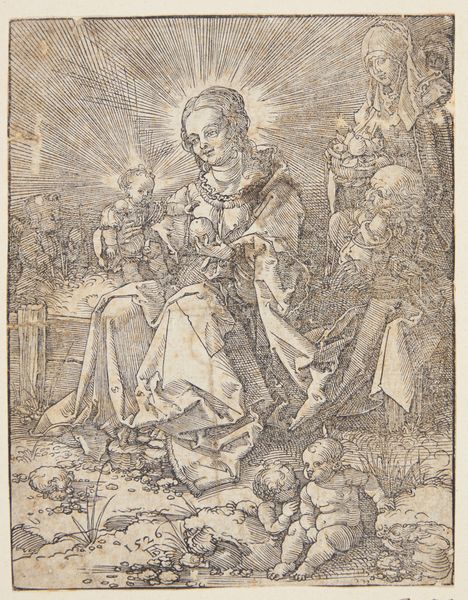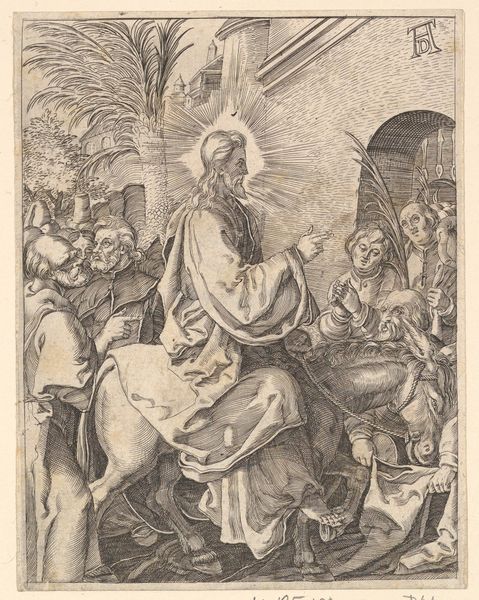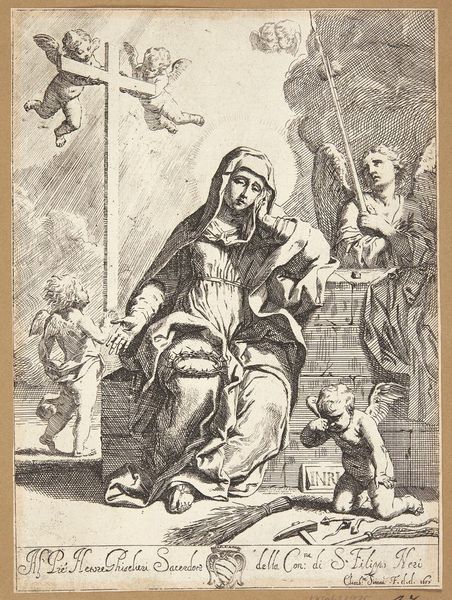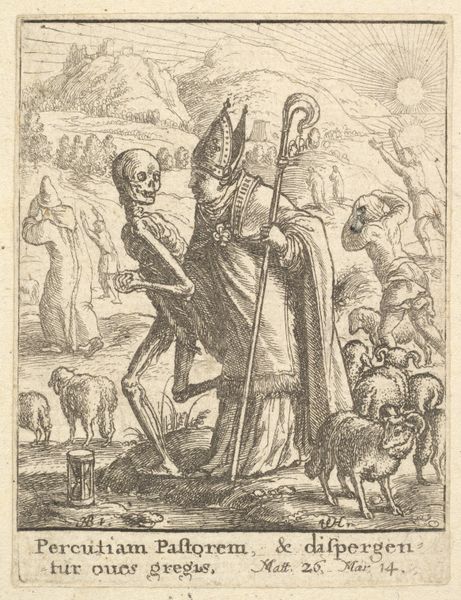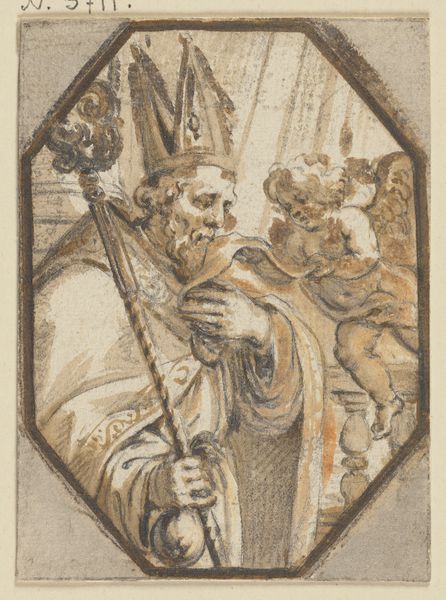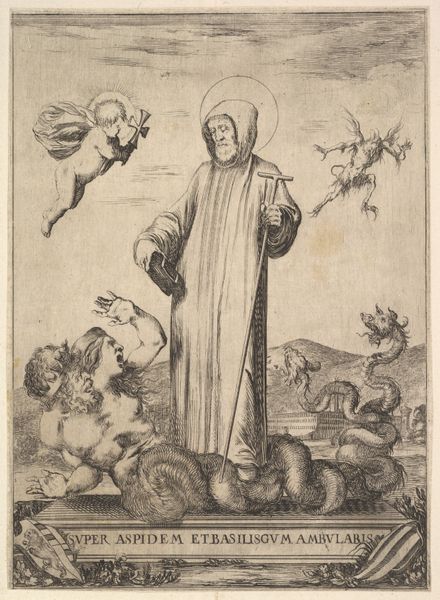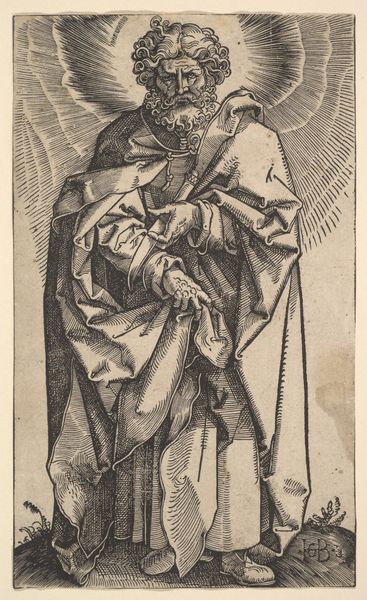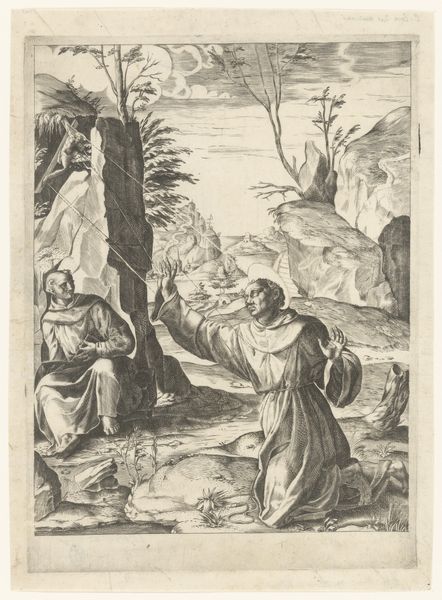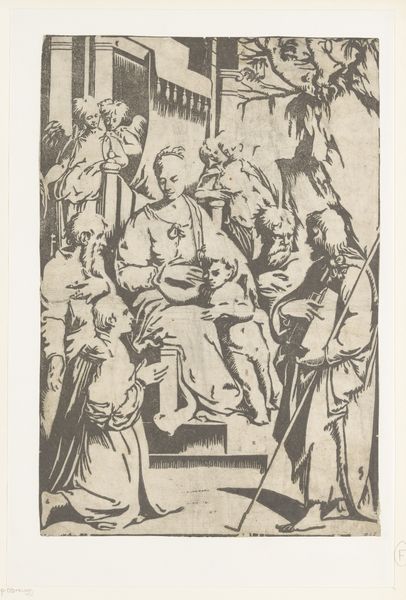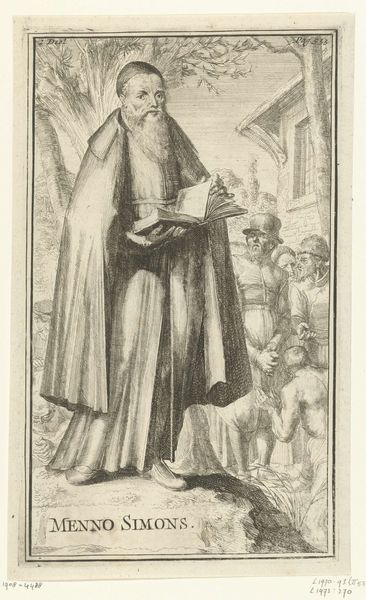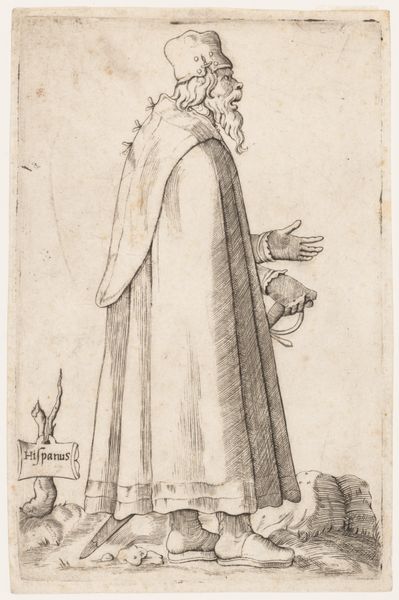
drawing, print, engraving
#
portrait
#
drawing
#
baroque
# print
#
history-painting
#
engraving
Dimensions: Sheet: 12 13/16 × 8 3/4 in. (32.5 × 22.3 cm)
Copyright: Public Domain
Curator: Before us is Ginevra Cantofoli's engraving, "Saint Thomas of Villanova," created in 1658. It’s a historical print housed at the Metropolitan Museum of Art. Editor: The image is startlingly detailed, especially considering it's an engraving. But its grayscale gives the whole piece a stark, almost solemn feeling. The Bishop dominates the visual field, yet his placement is softened by the whimsical nature of the cherubic figures below. What draws your attention? Curator: My eye is caught by the textures and composition. Note how the light drapes across St. Thomas's robes and reflects in his face, adding to the already heightened tension created by the subjects, some holding religious objects or seemingly waiting on Thomas’ instruction. Editor: Yes, I read his stance as both regal and inviting. Yet this stance feels contradicted when recognizing that the clergy almost obscures other religious personnel, the very image of divine service obfuscated in an attempt to portray some sense of greater “truth.” How do you think this work serves as propaganda, both subtle and overt, through an intersectional lens? Curator: To suggest a critical perspective from this work might ignore its intended function, an homage, created to canonize an event—but this also brings the question, ‘whose historical context dictates this “event”’ to you point about historical “truth.” Instead, if we read the subject—in this case, St. Thomas of Villanova—as being “revealed” under light—not simply depicted—I find this choice structurally illuminating when trying to further examine the meaning beyond it. Editor: Absolutely, I find our engagement to be far beyond pure aesthetics, particularly regarding works like this where hagiography blends with power dynamics, using faith in an almost paradoxical sense for good through charity. What do you feel that we can glean, as historians, regarding images such as this? Curator: I agree completely; what the material tells us transcends an era of its creation, the value that one reads will differ person to person, but not necessarily for lack of historical or material value, the fact that we can find our own experience projected into work as prolific, and historically impactful, to me, makes Cantofoli’s print remarkable. Editor: In examining Cantofoli’s Saint Thomas of Villanova, hopefully, we have encouraged everyone to consider the stories that emerge when formalist and activist interpretations meet, adding even greater historical importance for all!
Comments
No comments
Be the first to comment and join the conversation on the ultimate creative platform.
